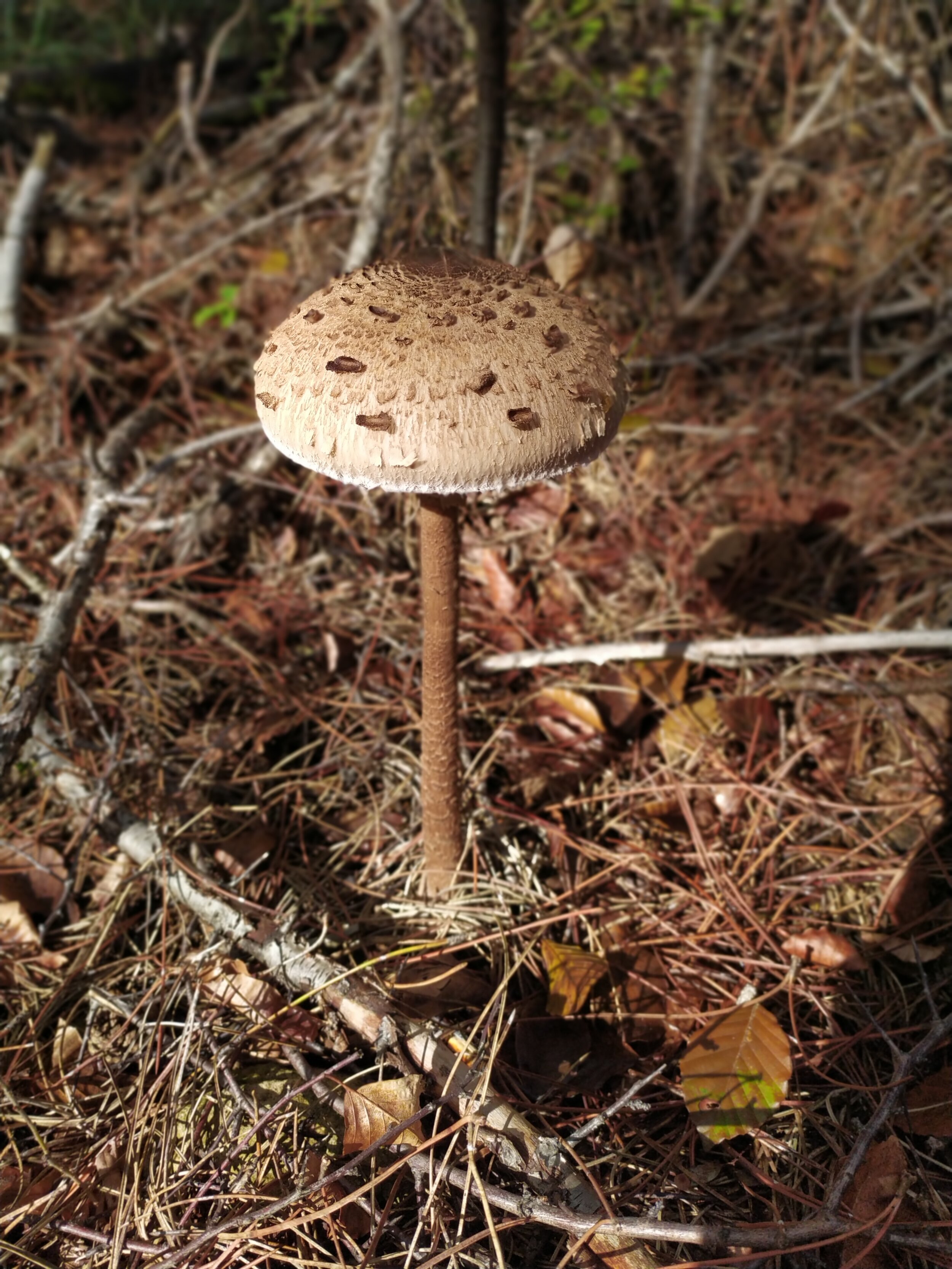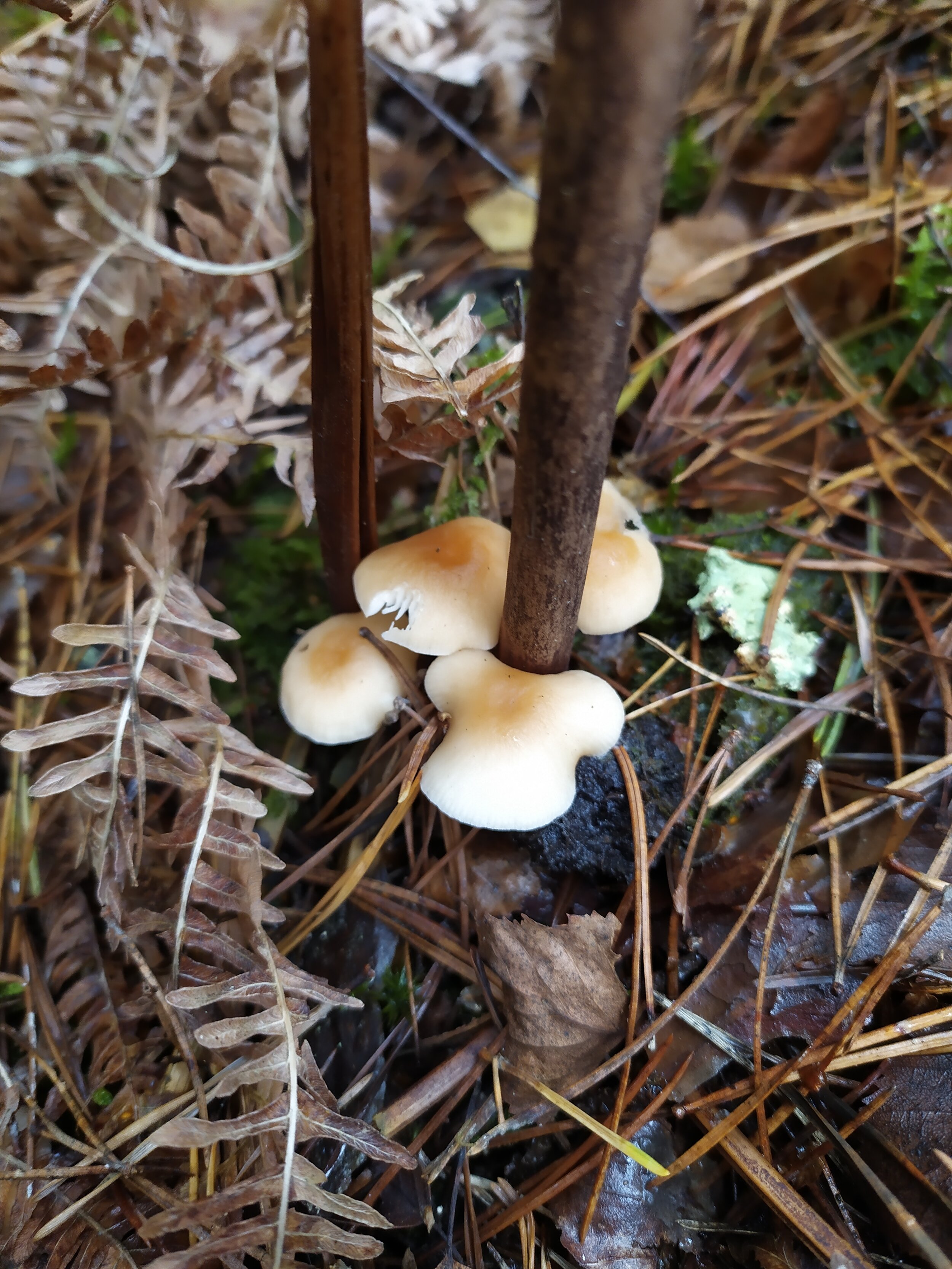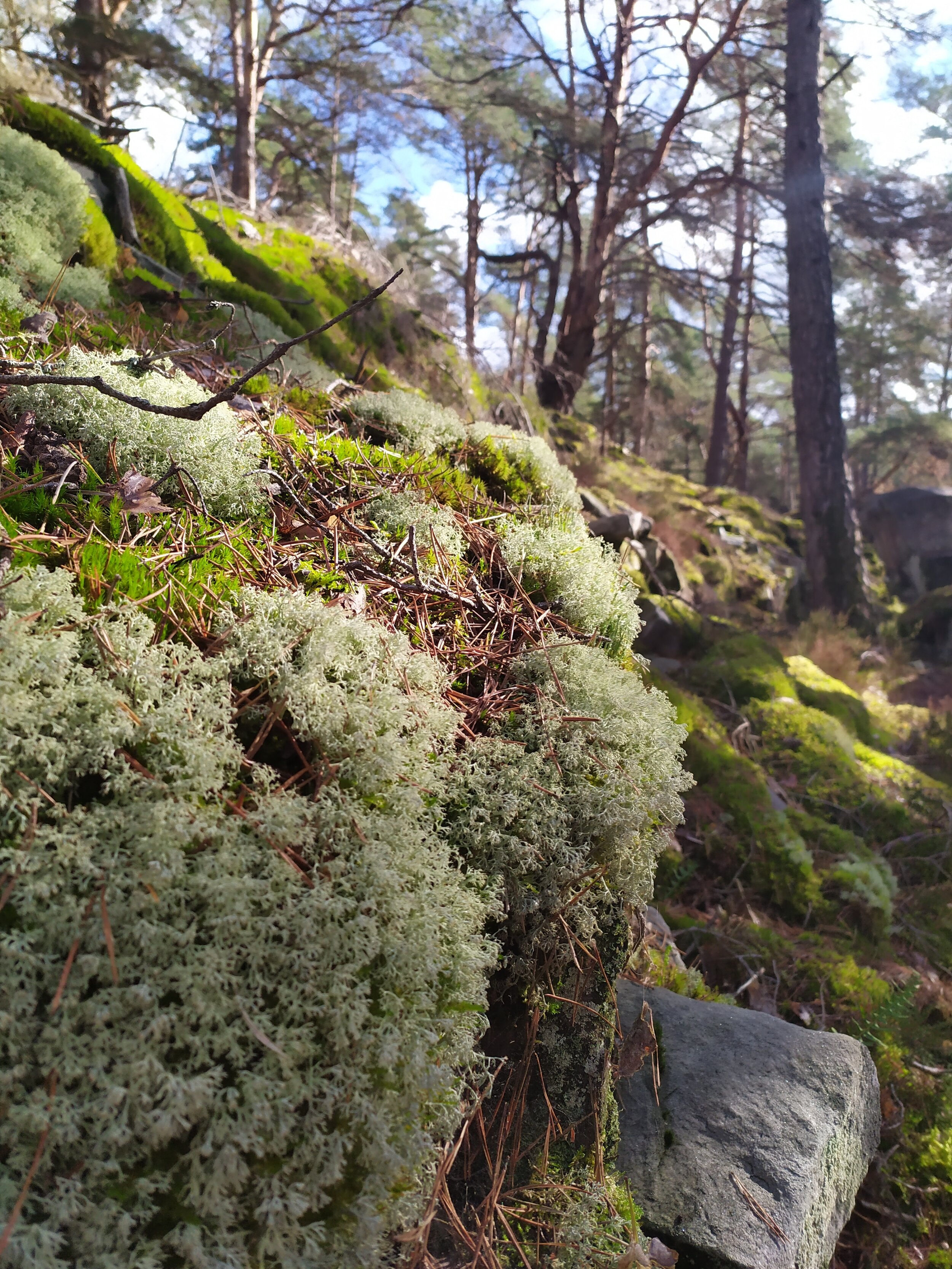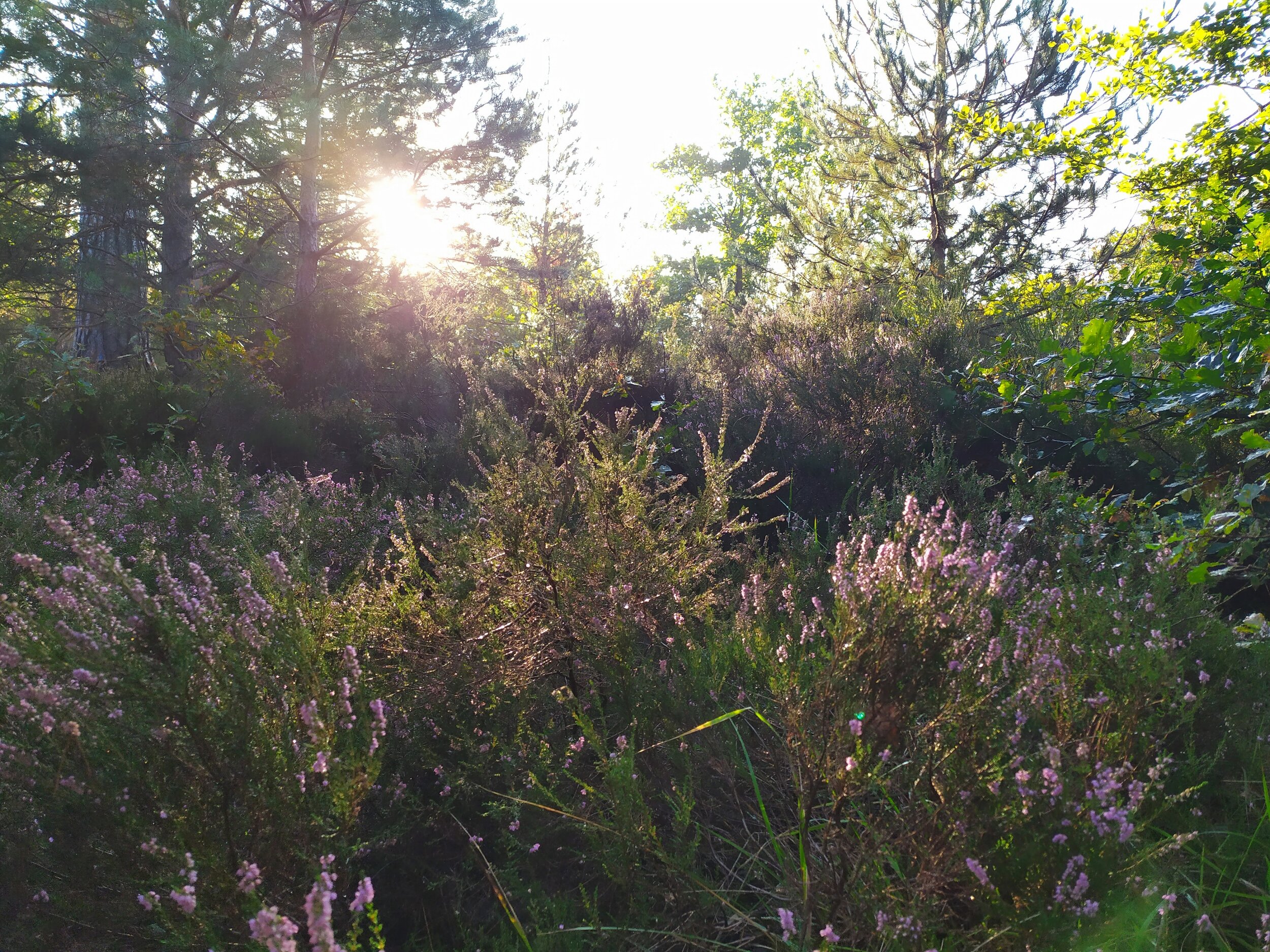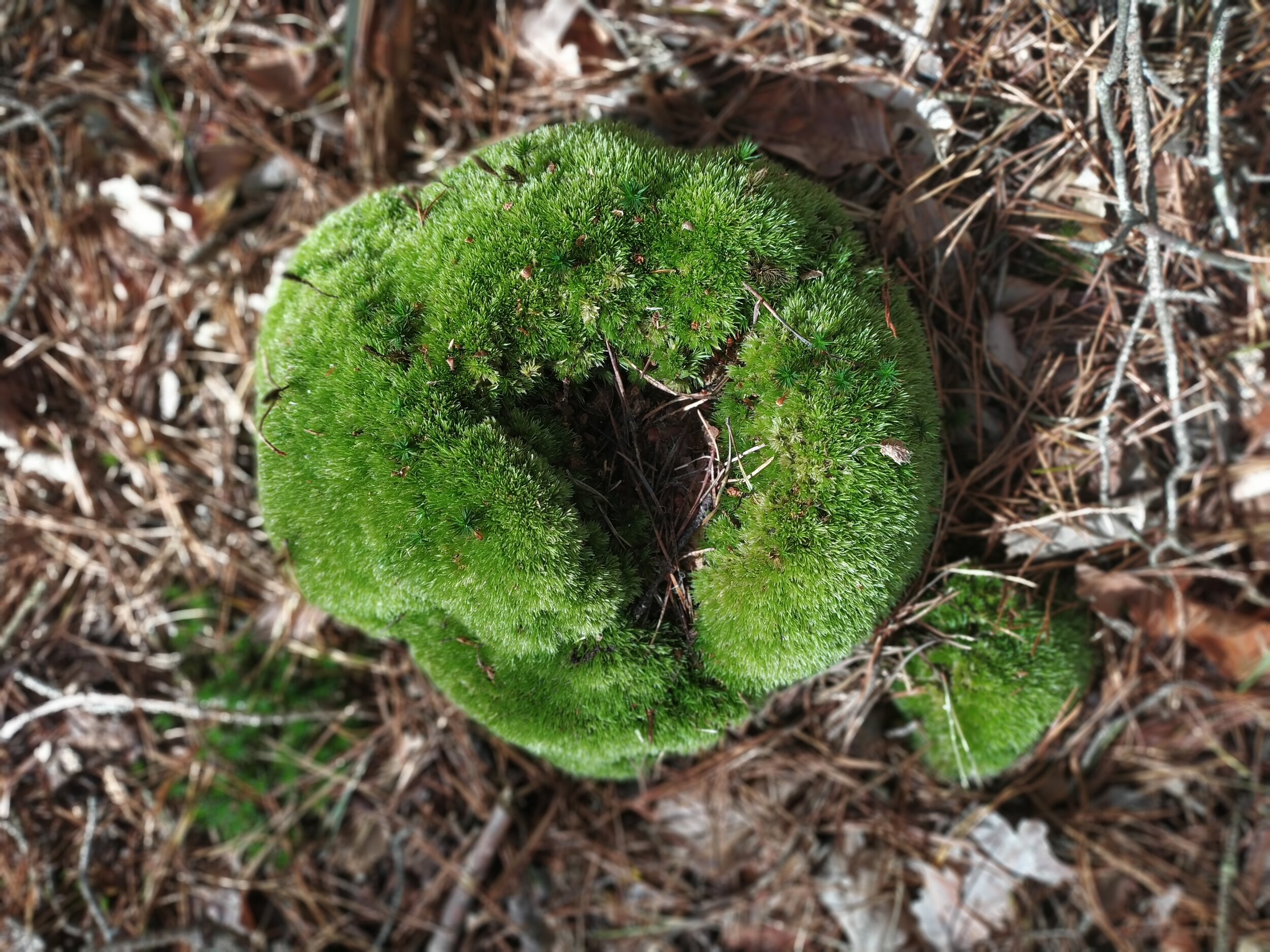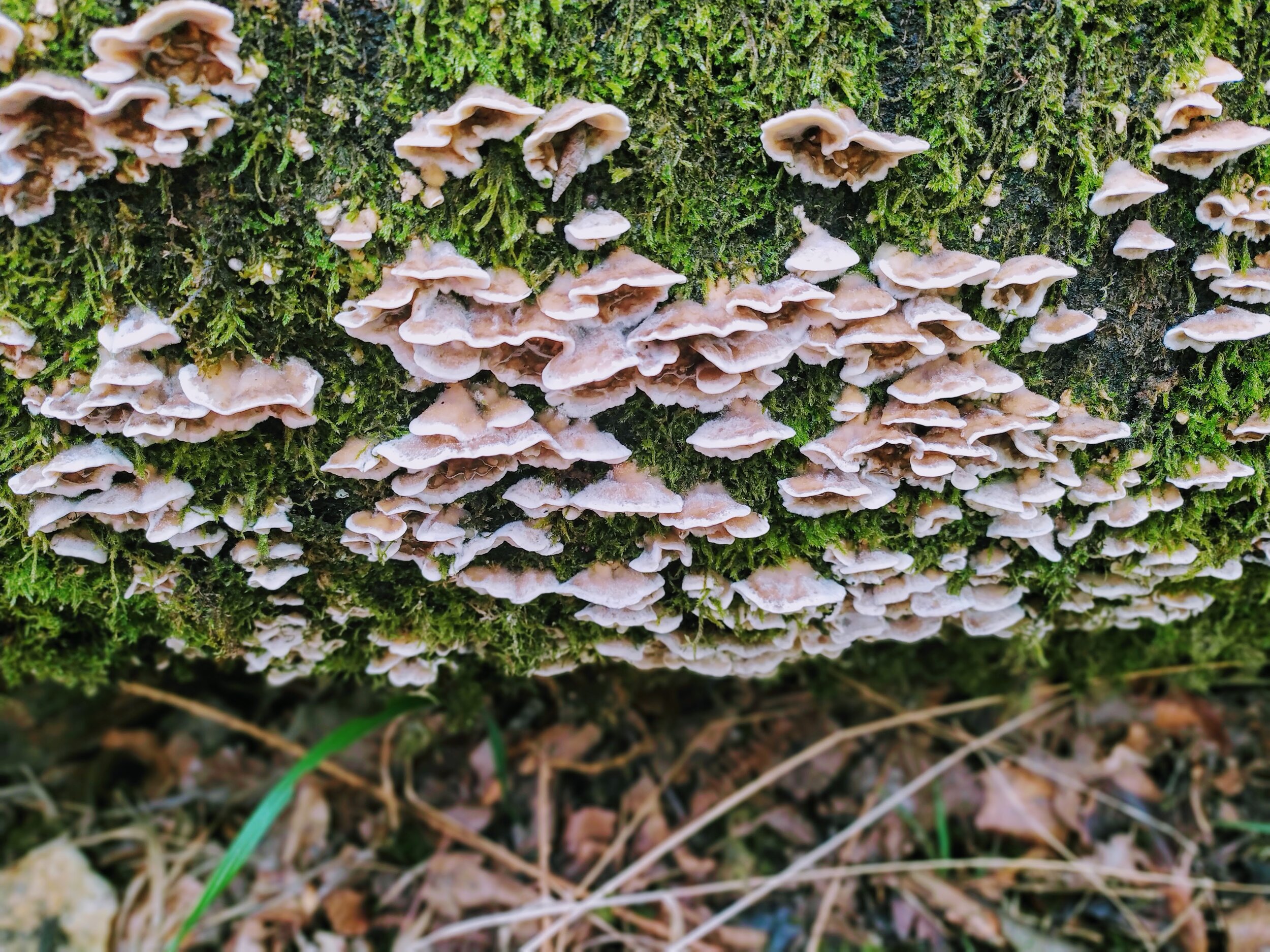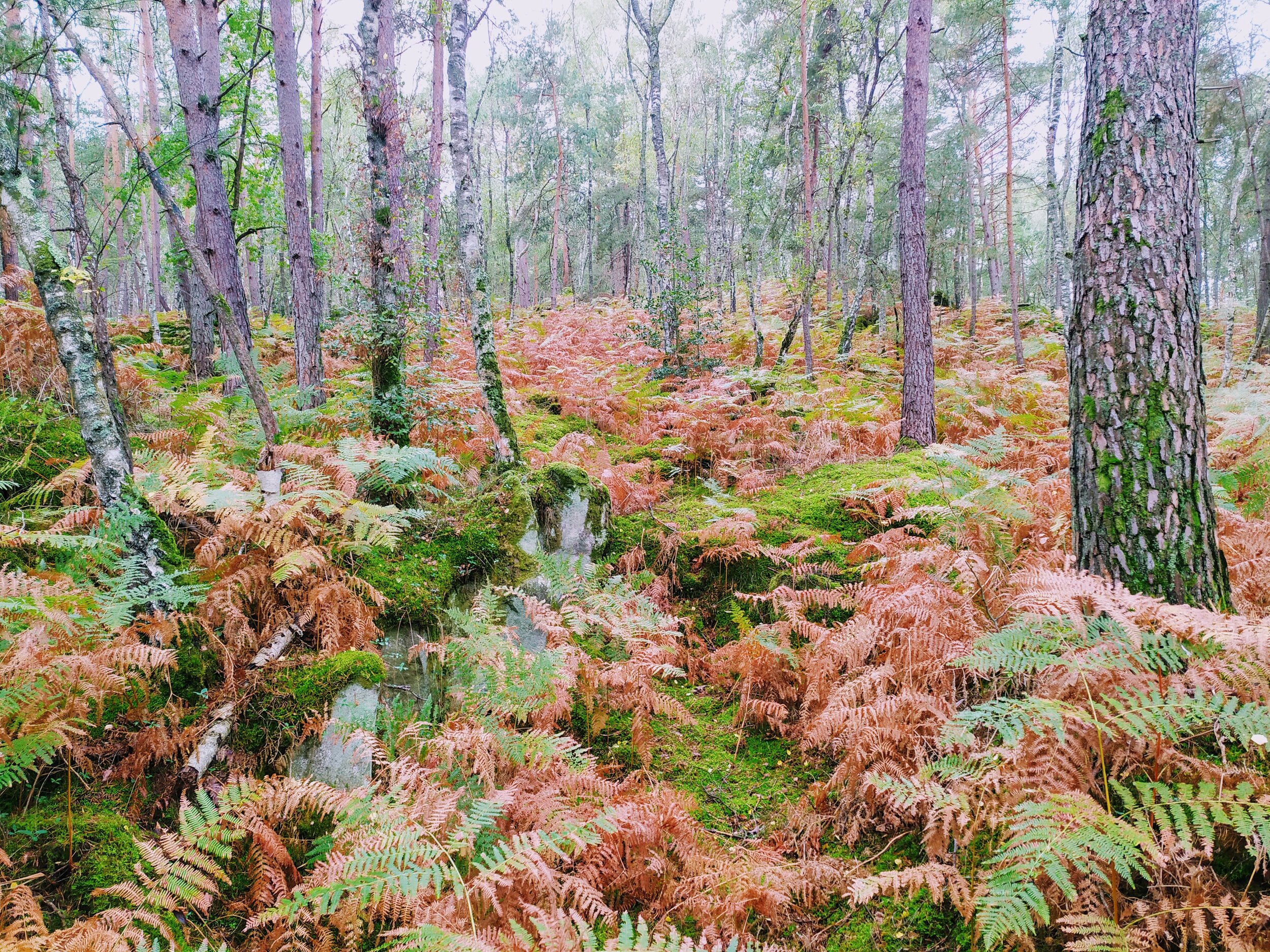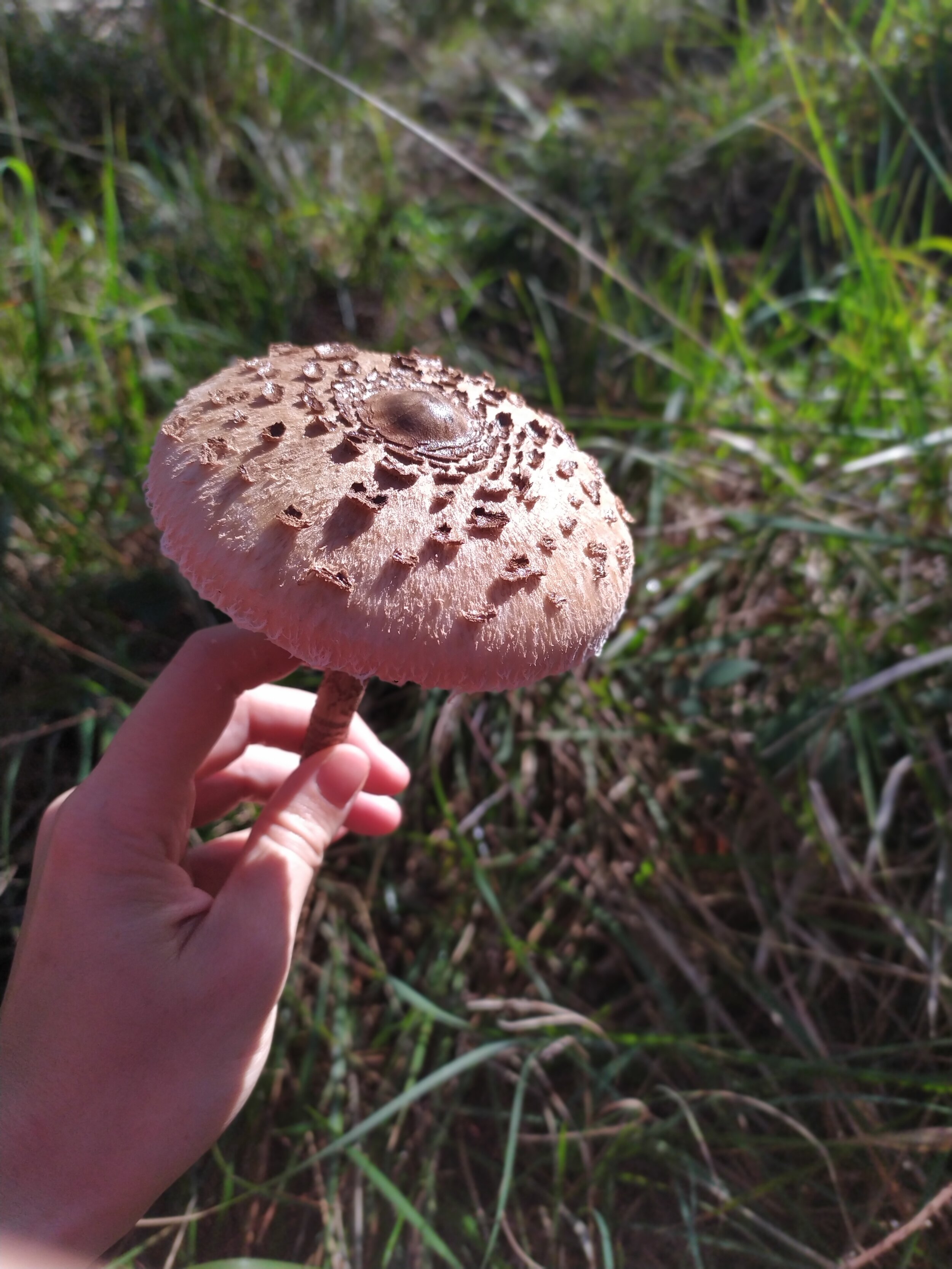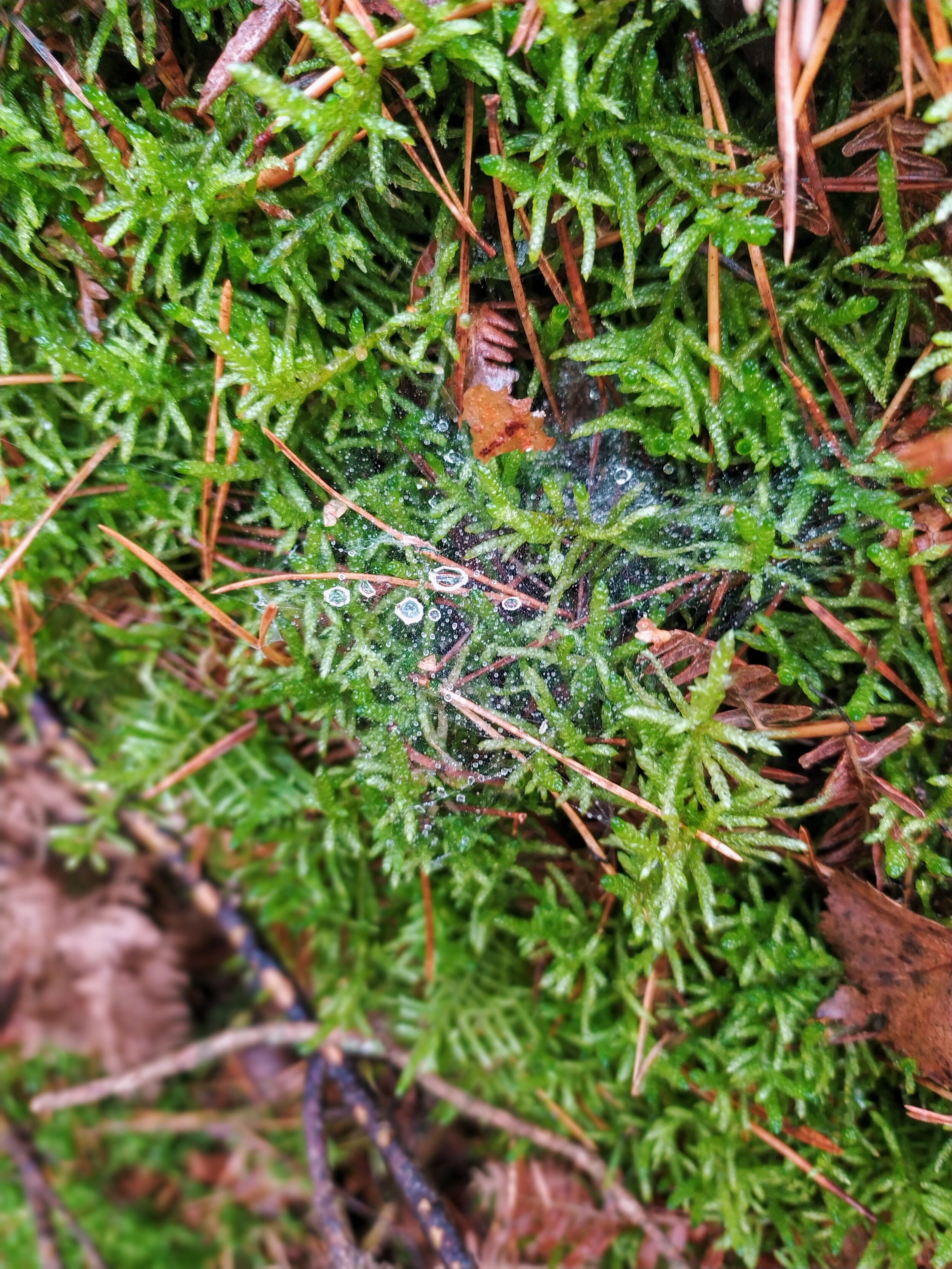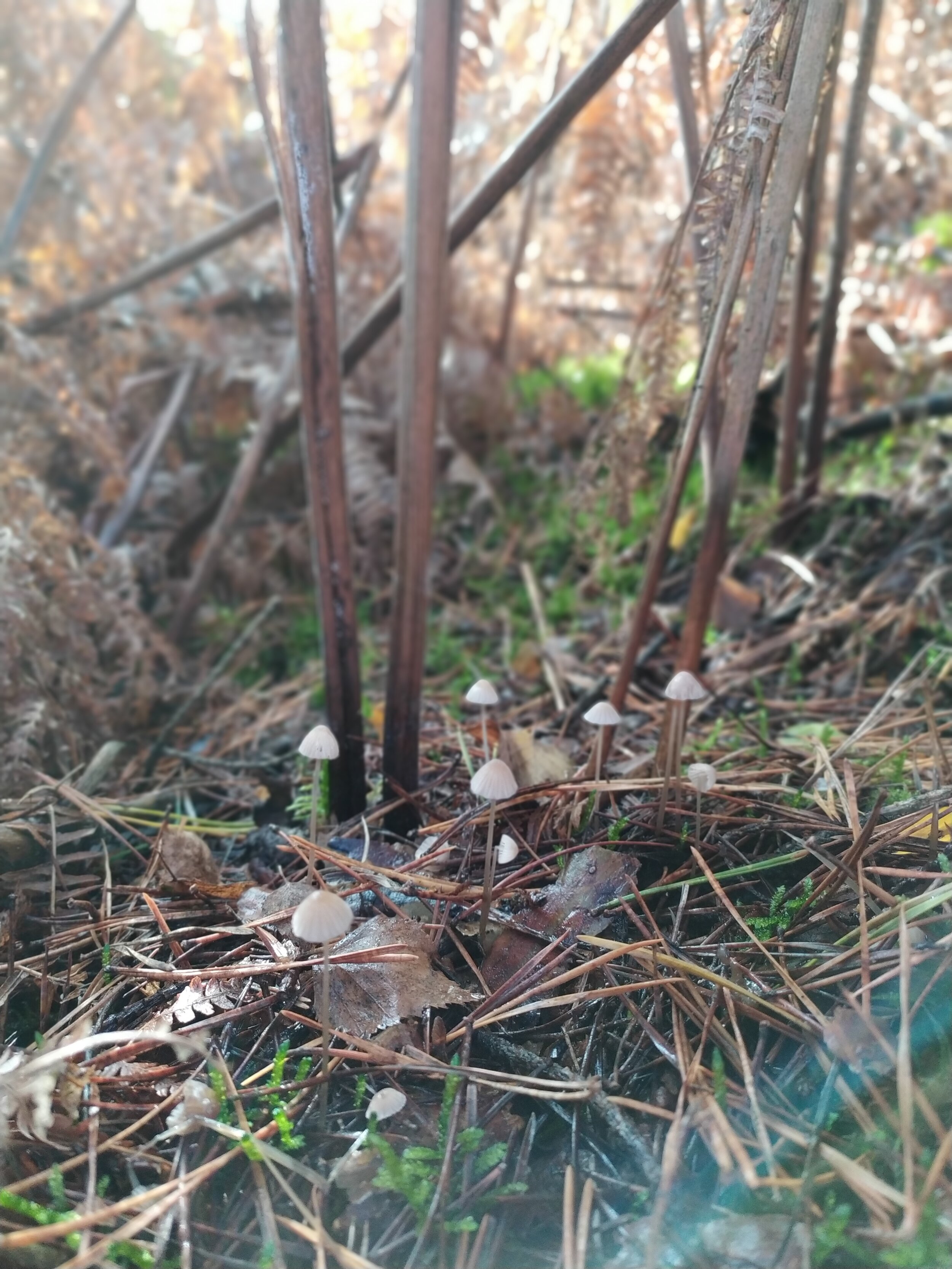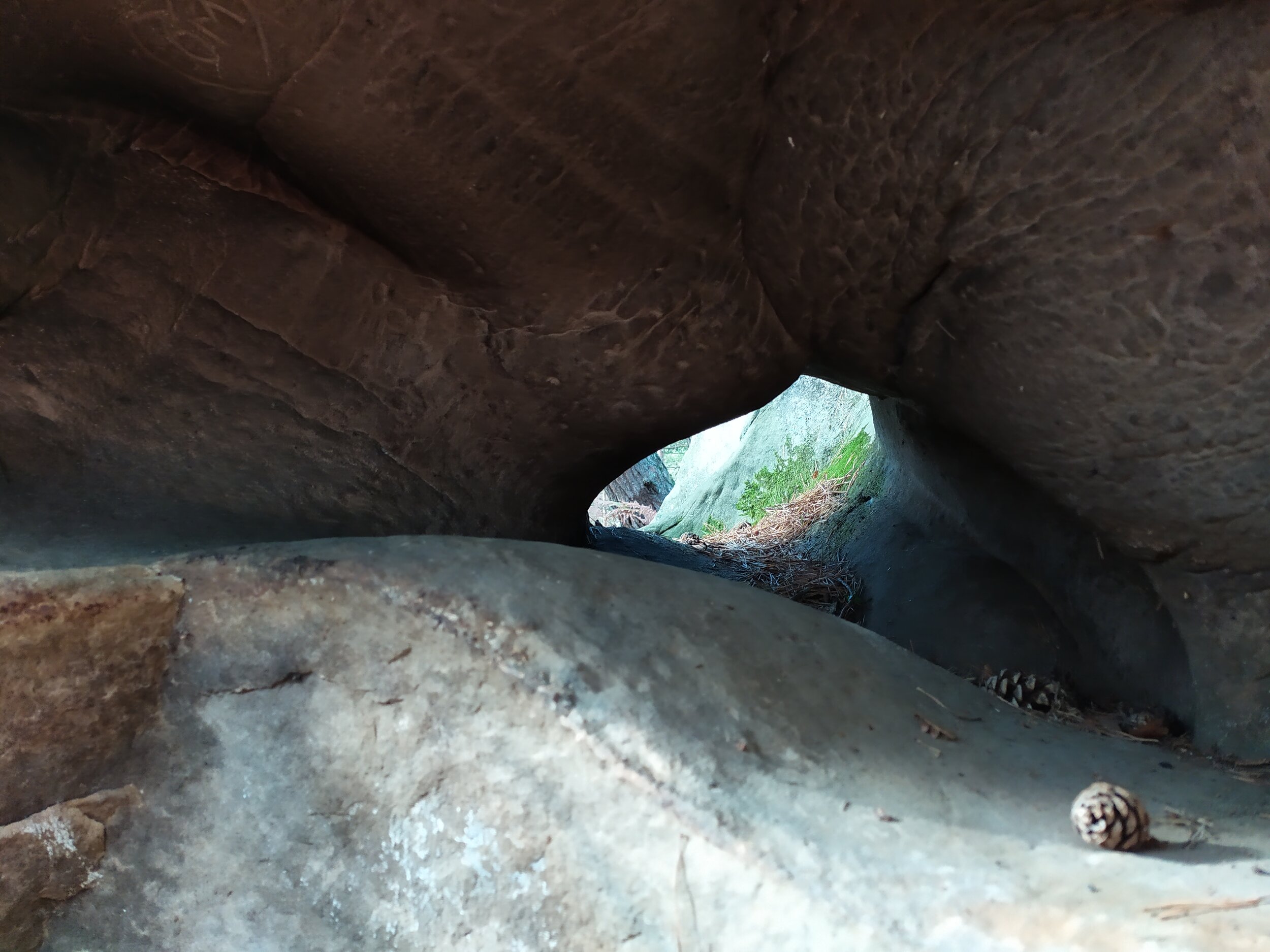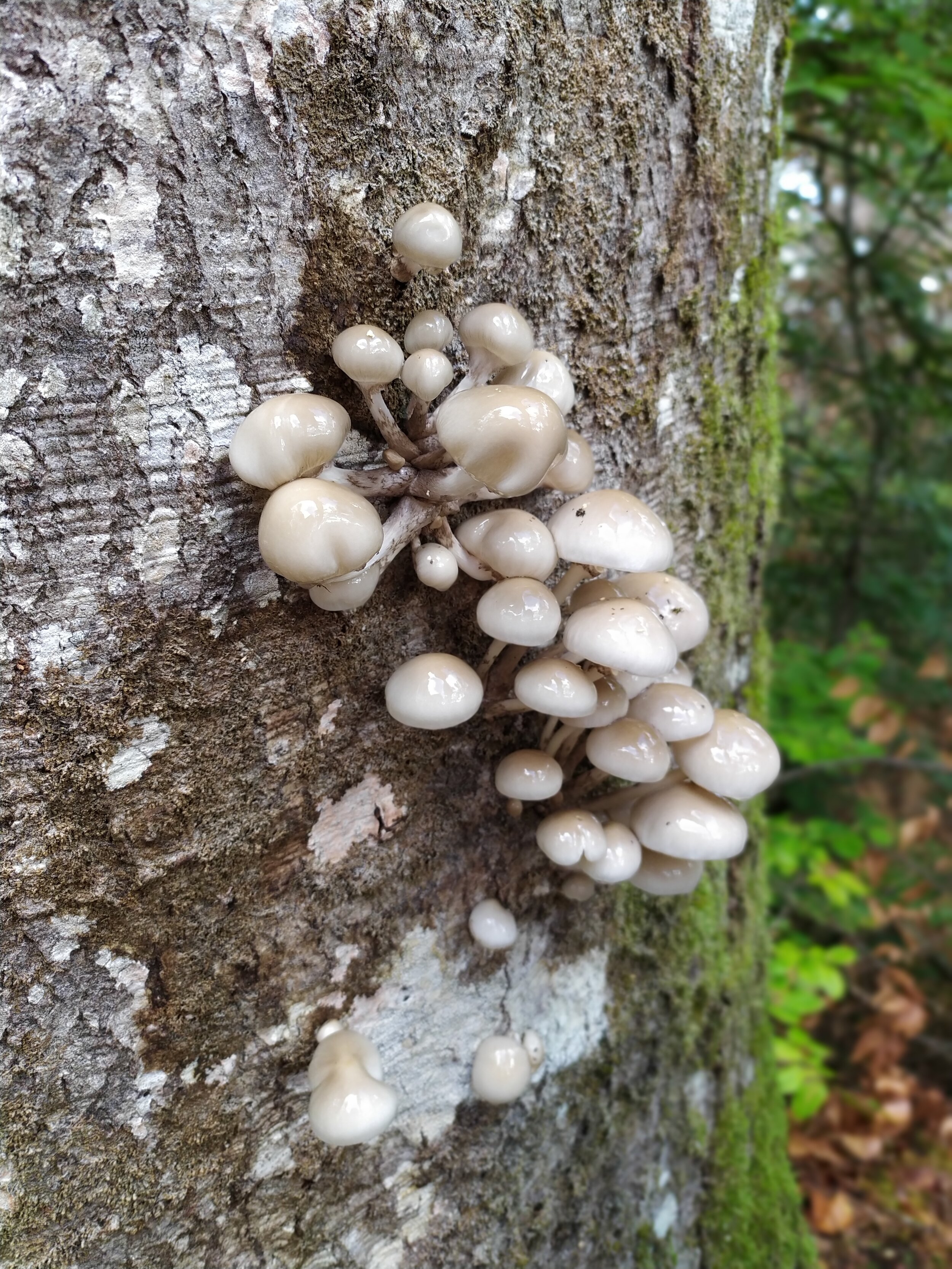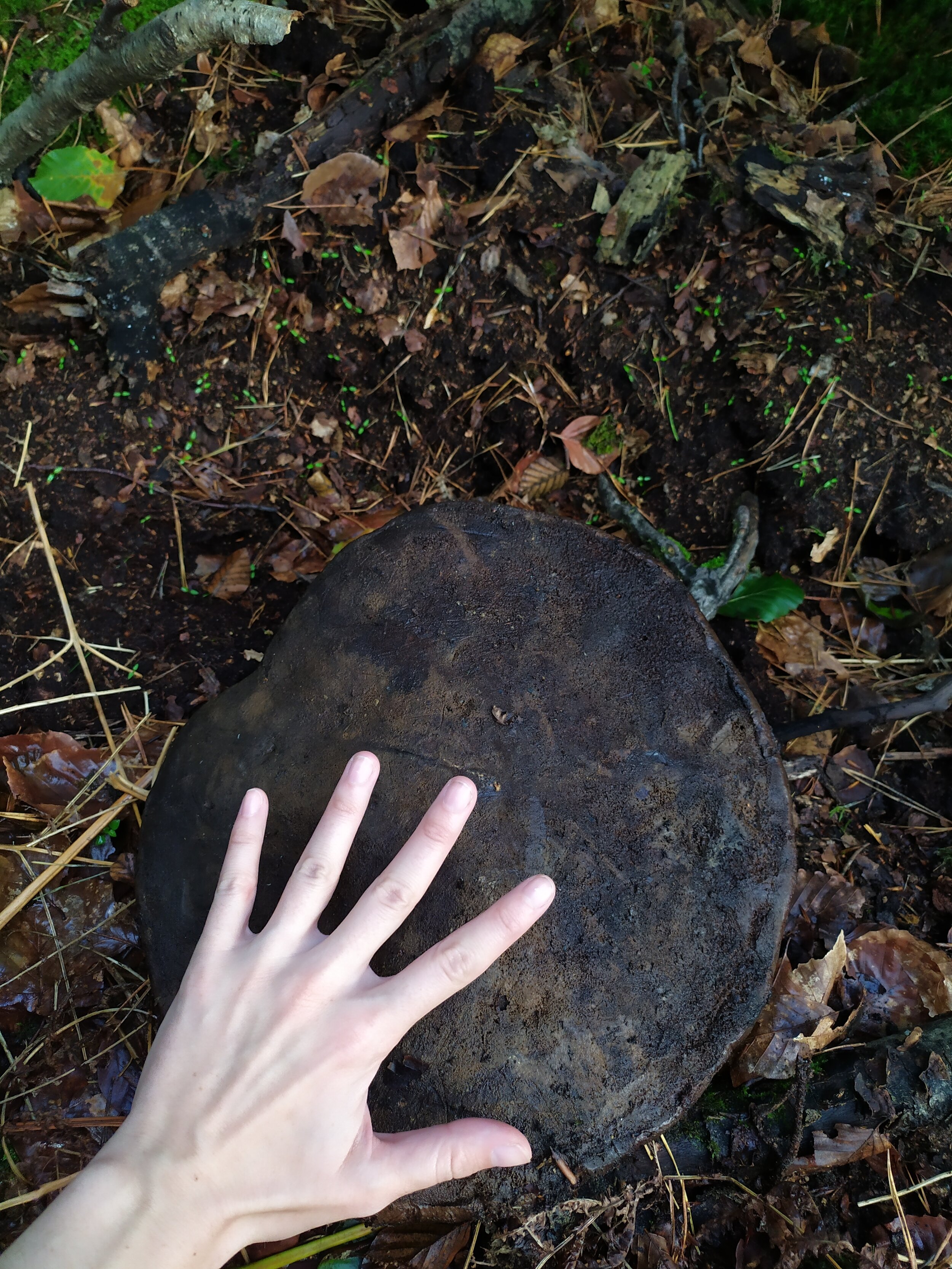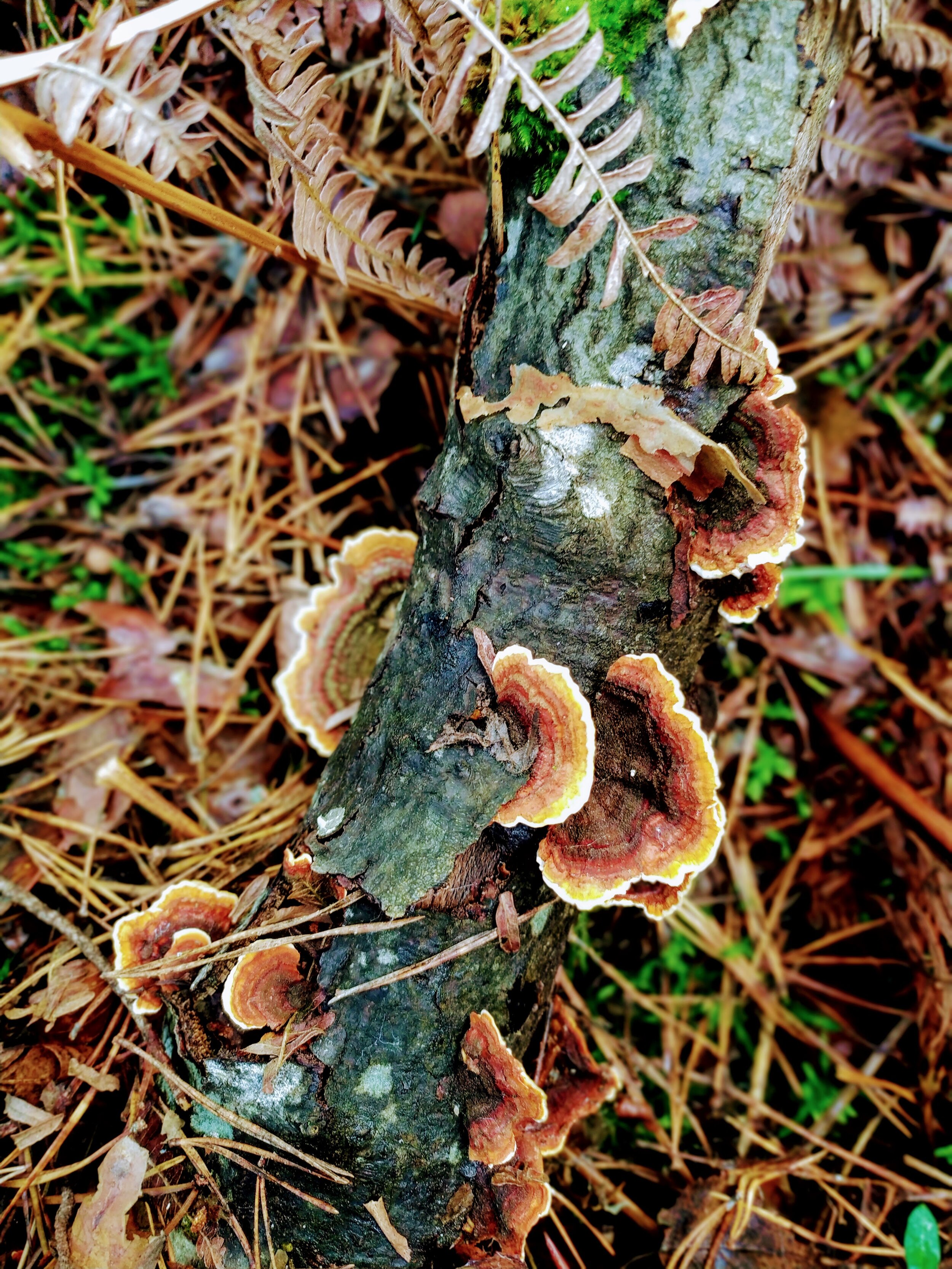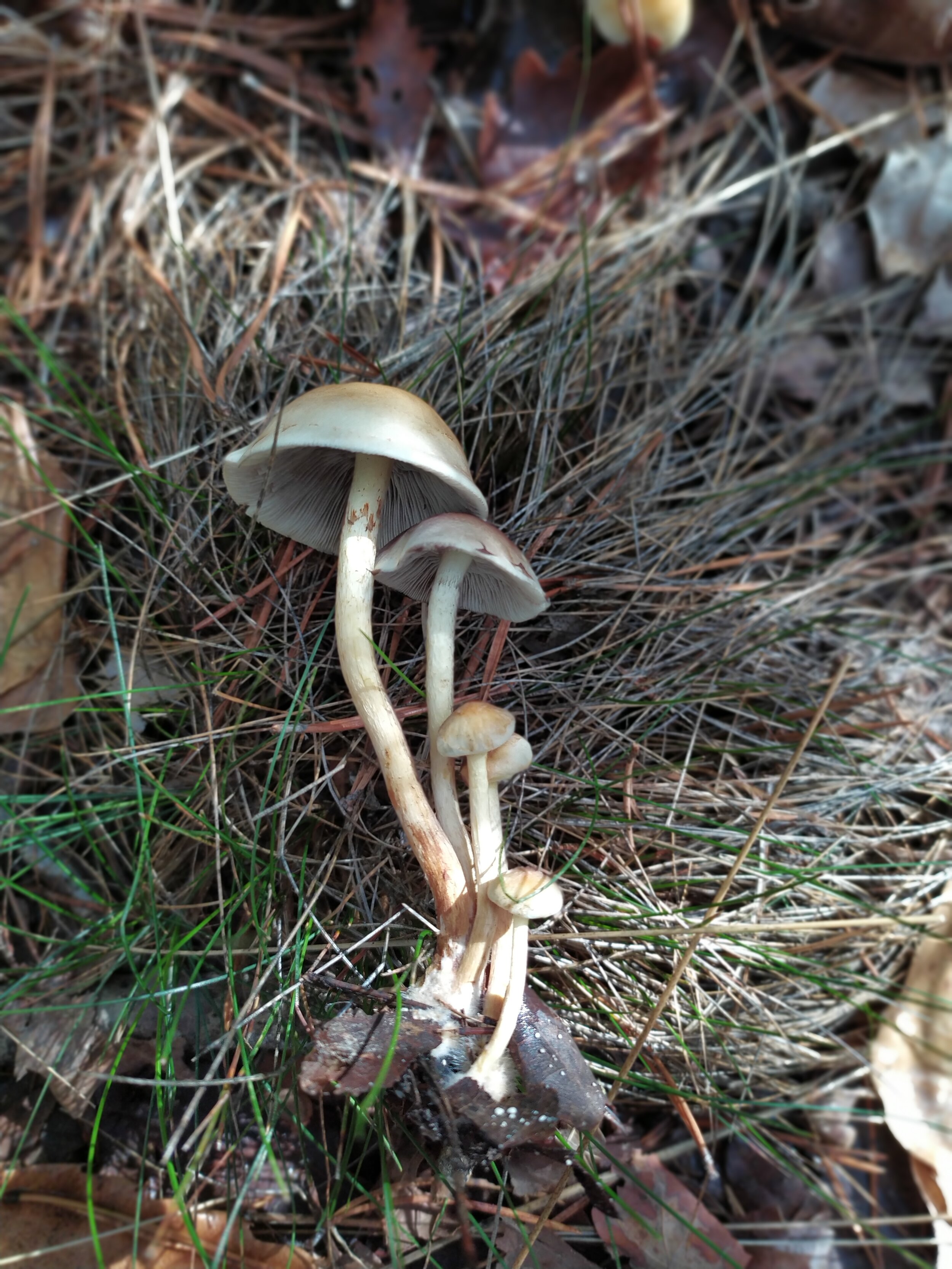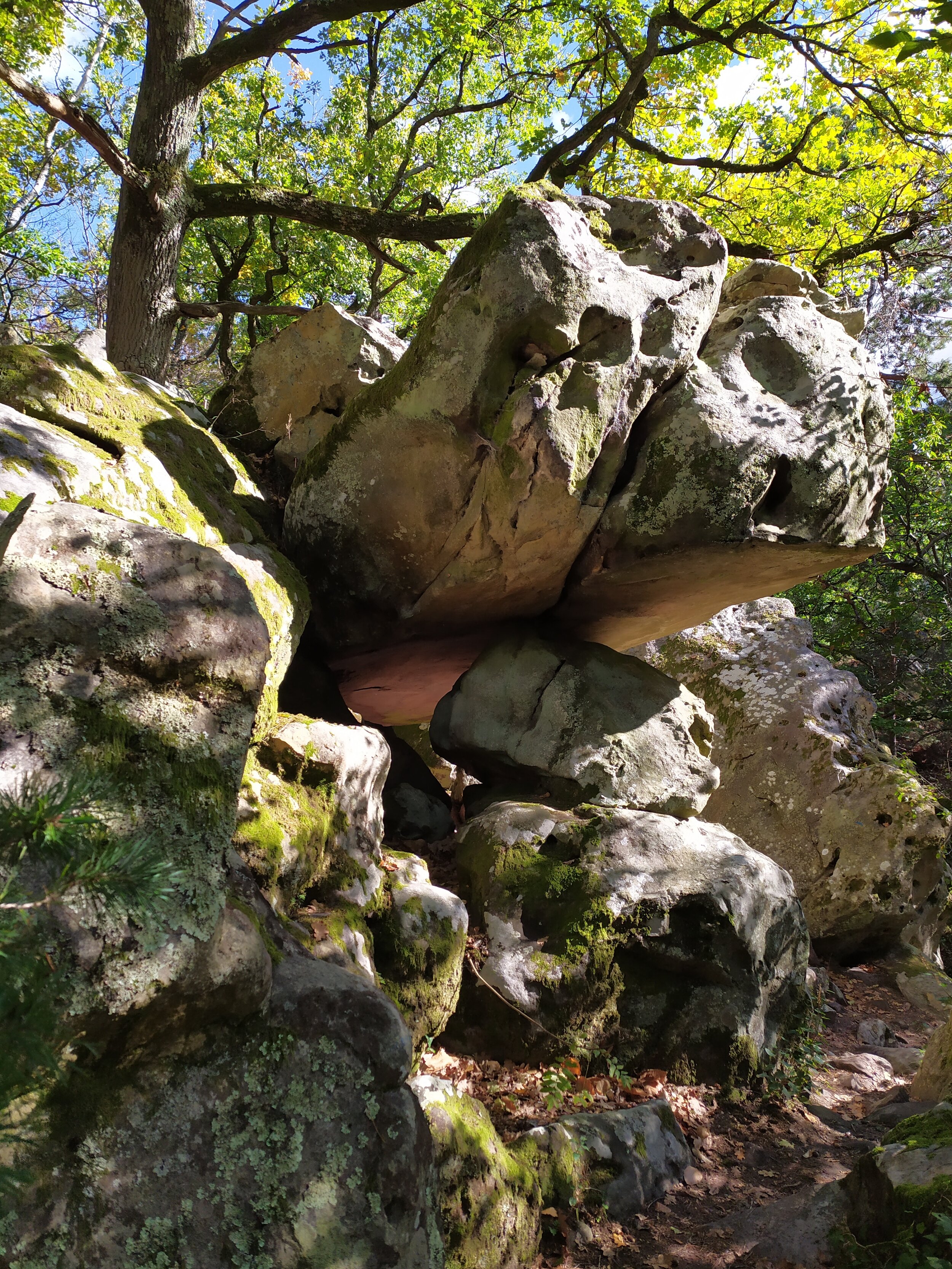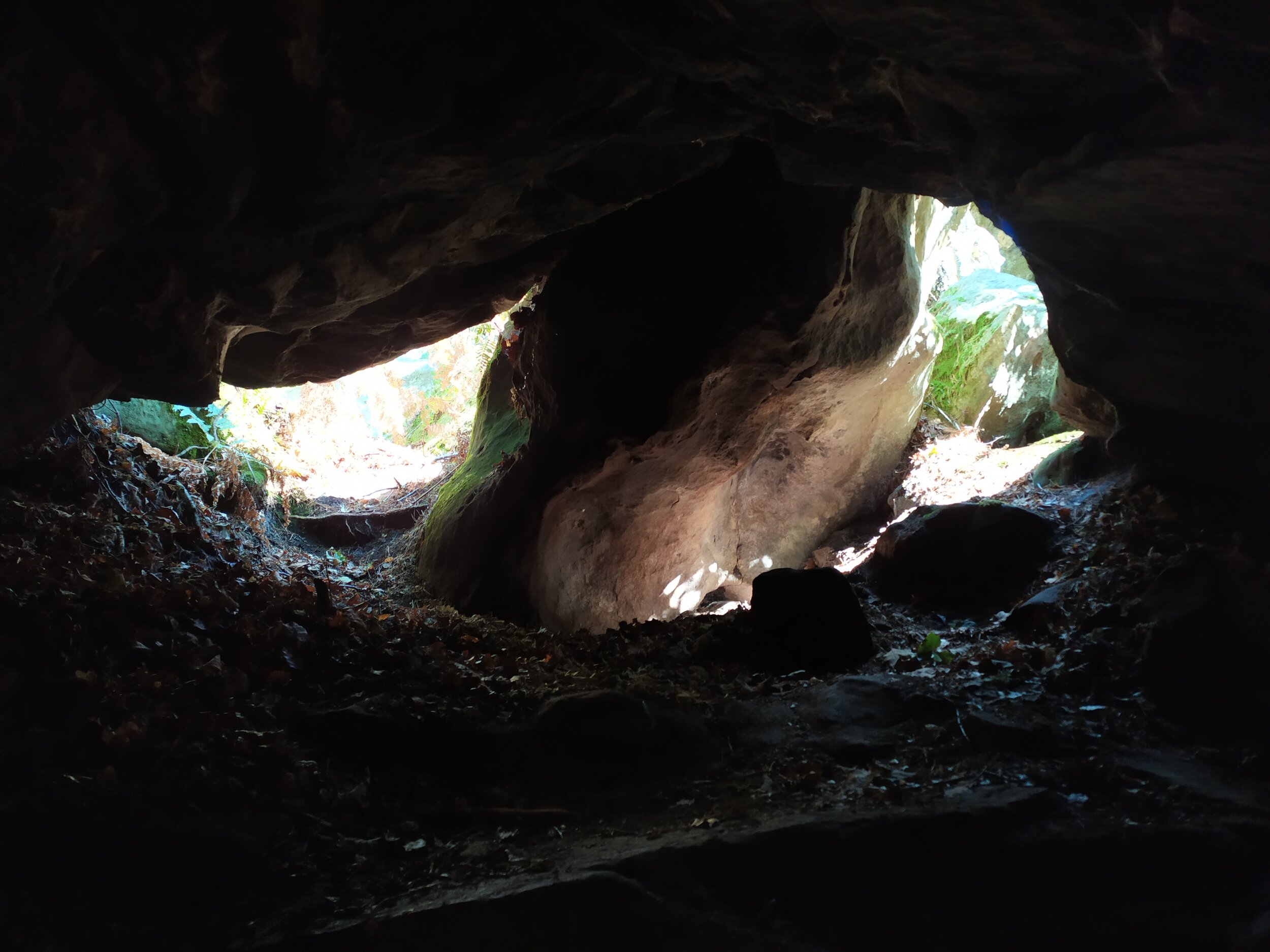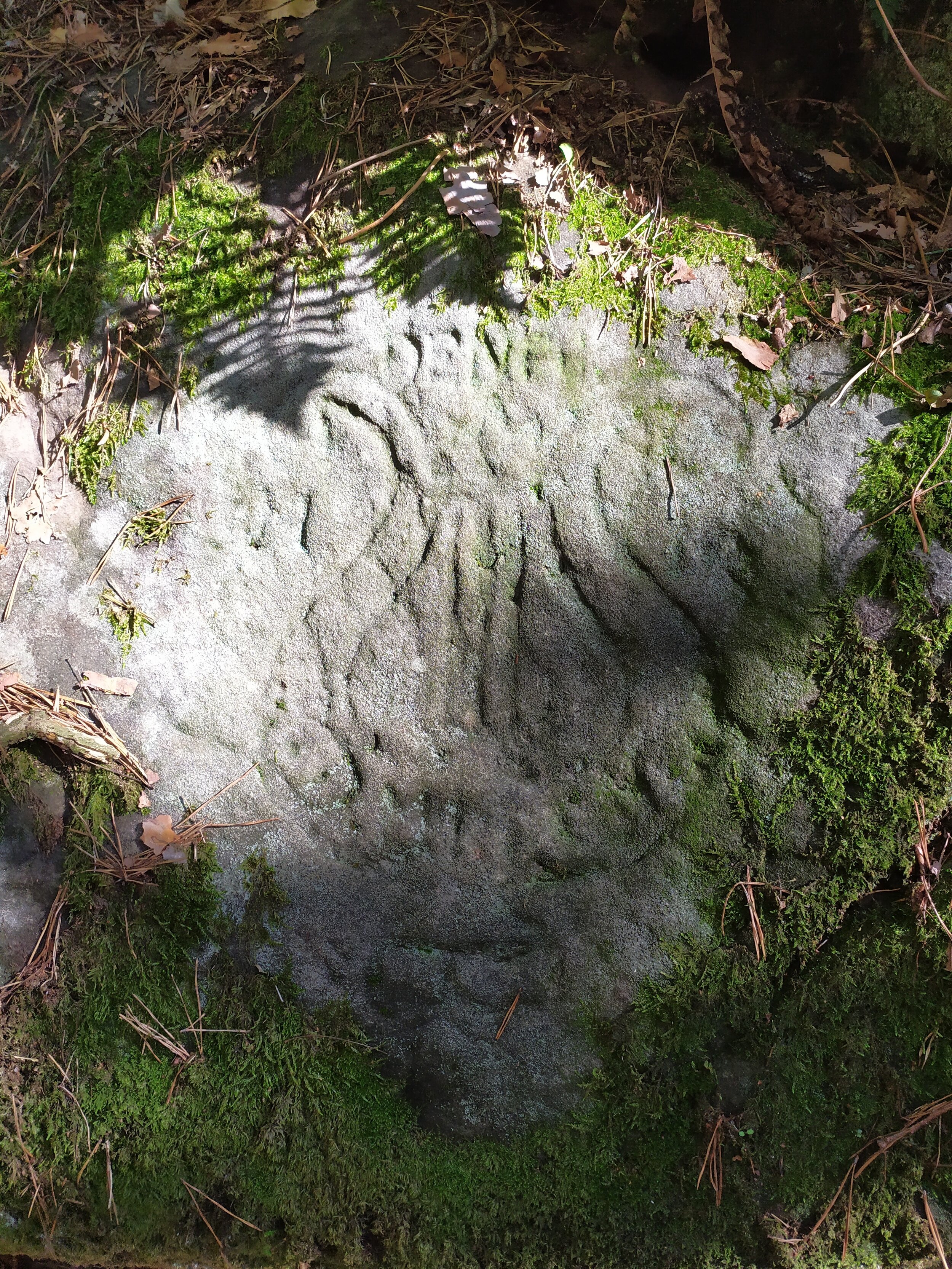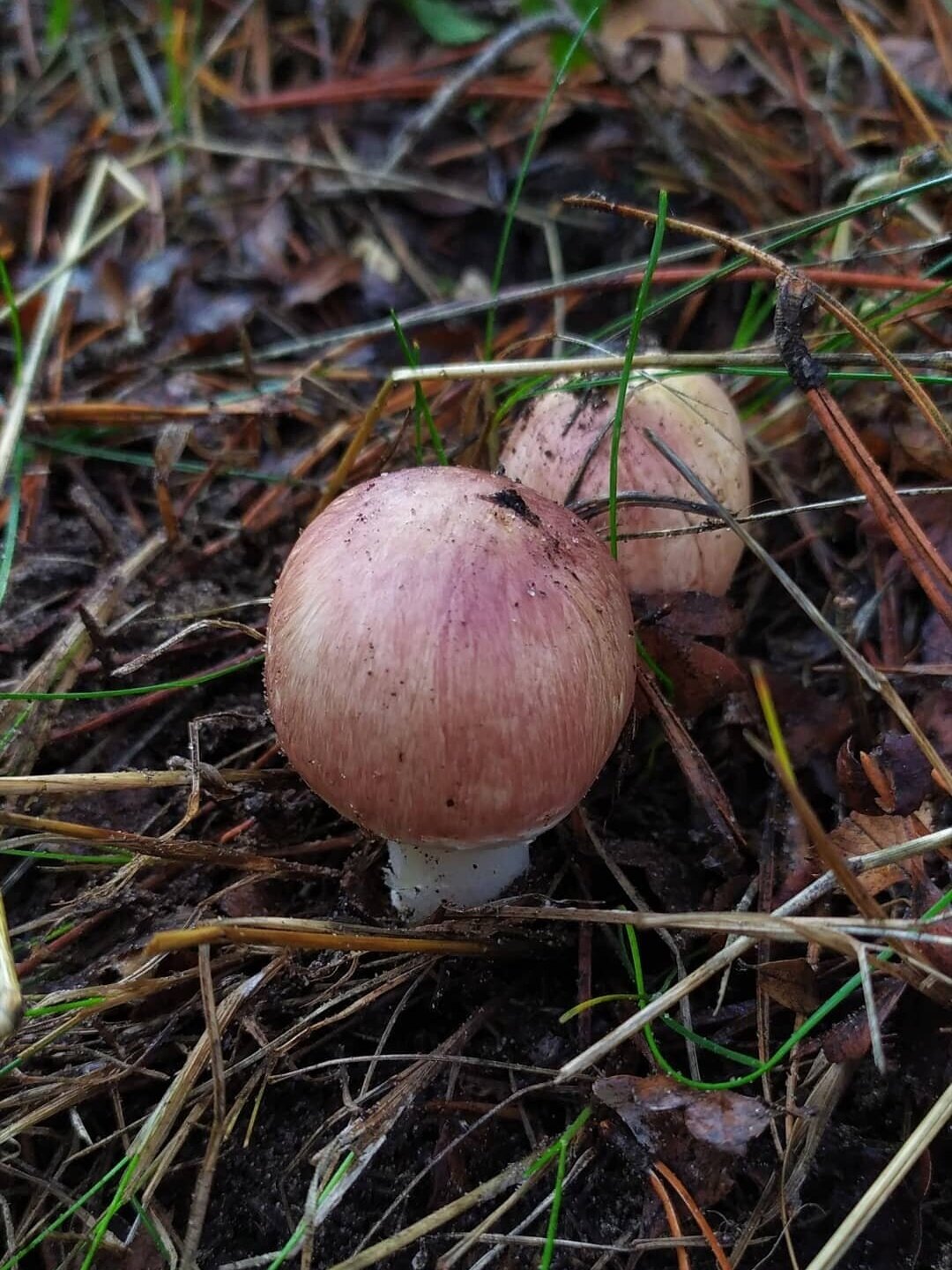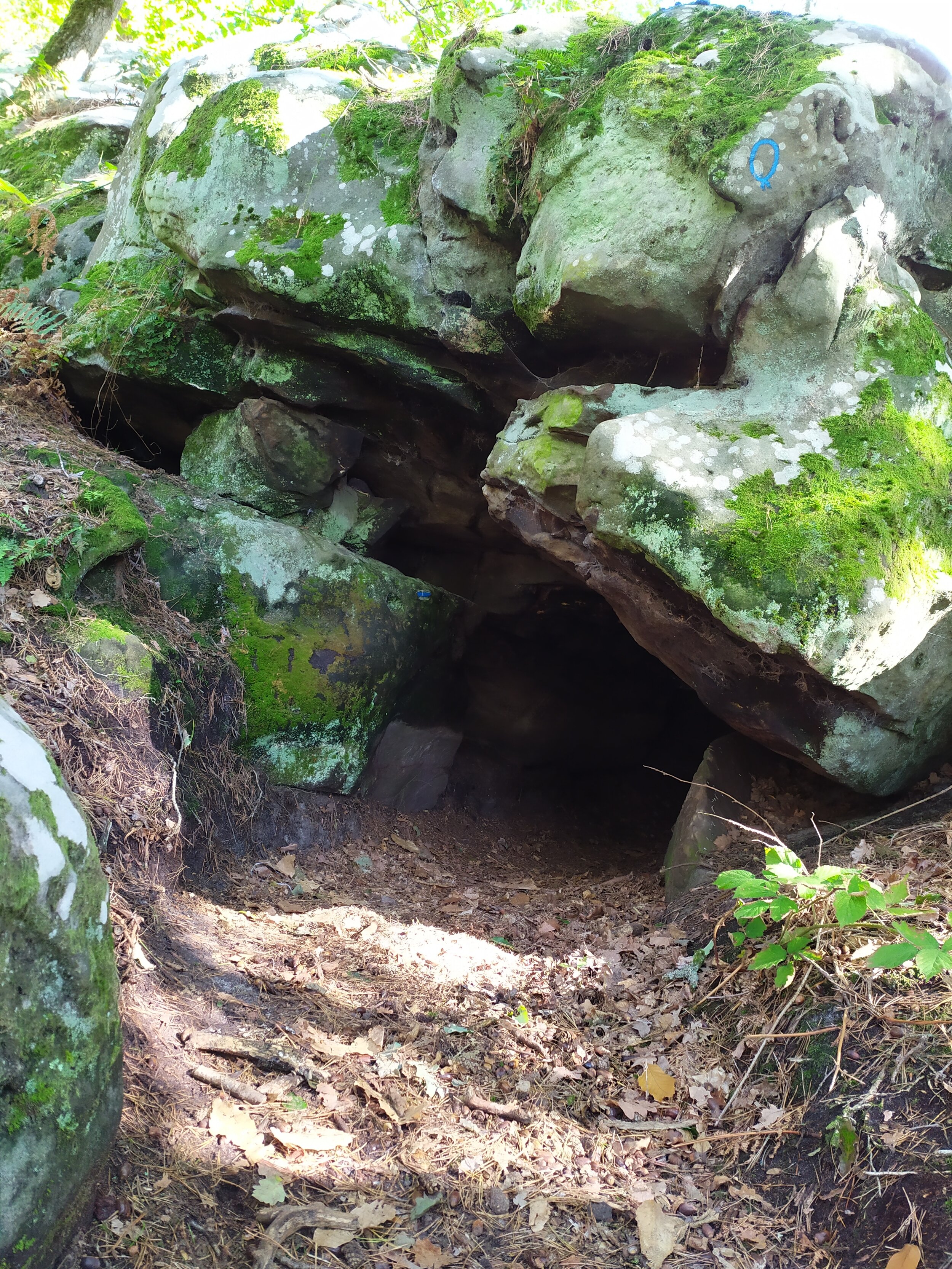Art of Mushroom Hunting
When autumn arrives in its ripe abundance and melancholic decay, I like to wrap myself in my warm scarf and quiet thoughts. A brief reflection on mushrooms, discovery, curiosity, and art.
When autumn arrives in its ripe abundance and melancholic decay, I like to wrap myself in my warm scarf and quiet thoughts. Like the finale of a fireworks spectacle, autumn fulfills the promise of summer with its generous harvests and brilliant colors, while reminding us of the impermanence of being and the inevitability of atrophy.
A few days ago, my friend and I went to the forest of Fontainebleau just outside of Paris for my first foray into mushroom hunting. The train dropped us off in the middle of the forest at a station without a platform or sign. Basket in hand and knives in pockets, we inhaled the cold, vegetal air and entered the early morning mist. As my close friends can attest, I have particular fascination with mushrooms–for their form, life cycle, personality, and of course delicious flavor–and had wanted to experience mushroom hunting for quite some time.
We spent the entire morning and afternoon weaving on and off the trail like two truffle pigs in search of a prize. As I am still unfamiliar with the biodiversity of Île-de-France, I was mesmerized by the sea of pink and green ferns, the muffled moss carpet, the unlikely rock formations, and splashes of strange wild flowers. I crouched with my nose centimeters away from the cool forest floor and observed everything from dew drops on spider webs to fungi on tree trunks. Lifting leaves and peaking under rotting branches, I rediscovered the childish joy of seeing and discovering something for the first time.
As we gather knowledge and habits with age, it’s natural to begin losing the magic of first time experiences. Favorite games become childish, first time flavors become mundane tastes, captivating music becomes overplayed tunes, the shiny new school bag becomes laden with assignments, the first sip of wine becomes a glass with dinner, and so on and so forth. As adults, we seem to seek out new experiences for the sake of feeling alive, be it a new sports car, bungee jumping, a voyage, or a new hair color. And in so doing, perhaps we awaken–at least momentarily–that wide eyed child we once were, in love with the brand new world around us.
My friend must have been perplexed when he saw me taking a hundred pictures of rocks and mushrooms. He asked me what I was going to do with all of these photos, and I said I enjoyed the act of capturing a good composition more than looking at the photos later. In fact, I just wanted to capture the beautiful novelty of the experience as a small artistic exercise. There are certain works of art that have never lost their initial luster despite years of acquaintance: Mozart’s Sinfonia concertante, Brancusi’s Bird in Space, Calvino’s Mr. Palomar, Bartók’s Contrasts, Canova’s Psyche Revived by Cupid’s Kiss, Ando’s Naoshima Art Museum, Gondry’s Science of Sleep, Chagall’s Les amoureux, Corea’s Mad Hatter, the list goes on.
Amazing works of art give me conviction that we can always experience a moment with the love and curiosity of the first time. Art has the potential of capturing so convincingly this feeling of being alive that, despite years of familiarity, we can look upon them time and time again as a wide-eyed child, in awe of the new sensational limits. As a composer, I relish and cherish experiences like my first mushroom hunt, because I want to musically capture such moments when I am breath taken by reality, when I dive ever so deeply into the wonders of the mundane.
How often do I take for granted what was once new and precious? Sometimes I see an elderly couple who are in love like honeymooners after decades together, and I feel profound admiration and envy for their ever-present connection. If there is ever a day that my love of music becomes less that what it was for me in childhood, I think I would quietly quit composing. Seeing as that is incredibly unlikely, I will, for the moment, take a basket in hand and continue hunting for these moments of gratitude in reality and in art.
Risotto aux champignon sauvages
Ingredients:
250g (1.5 cups) of arborio rice
A big heap of mushroom of your choice/finding (we found mostly coulemelles and one vesse-de-loup)
2 cloves of garlic
1 large onion
20cl (1 cup) of dry white wine
10cl (1/2 cup) of crème fraîche
2 cubes bouillon of your choice
Parmesan
Parsley (or dill)
Butter
Oil (I used olive oil)
Salt & pepper
In a sauce pan, melt some butter and cook the minced garlic for 2 minutes until fragrant. Clean the mushrooms and cut them into generous strips. Toss them to the garlic butter for 3 minutes. Finely chop the parsley and add to the mushroom along with salt & pepper. Immediately remove from heat and set aside.
Bring 1L (4.25 cups) of water to a boil and add the bouillon of your choice (I used vegetable based).
Finely mince the onion. In a sauce pan, heat the olive oil and add let the onion, cooking until translucent. Add the rice and let cook for 2 minutes until likewise translucent. Add the wine and wait for it to be soaked up by the rice.
Then, ladle a scoop of the broth and stir well until the liquid is absorbed into the rice. Repeat the process ladle by ladle until all the broth is used.
Add the crème fraîche and the mushrooms and continue to cook for 2 minutes on low heat. Stir gently at this stage as the rice will be tender and the mushrooms delicate. When the rice seems well done, serve with grated parmesan and a tuft of parsley. Despite being a vegetarian dish, I find that it pairs well with dry and full bodied reds such as Bordeaux or heavier Bourgogne.
Bonne dégustation!
*TIP: If you are using a more juicy variety of mushrooms, such as girolles, you may want to first heat them in olive oil to let out the excess water. Pat dry with paper towels. They will better soak up the delicious garlic butter flavor!
Art of the Bouquet
A good bouquet is surprisingly challenging but definitely rewarding to make! Here are three insights about being a musician that I gained from building a bouquet champêtre…
Ever since moving to Paris, I have been admiring the French culture of floral art and horticulture. Perhaps thanks to the ubiquitous balconies of Parisian apartments, there is hardly a street in this town without a healthy array of florists. Having been accustomed to living in the US, where florists in strip-malls appear and disappear like mayflies , I am deeply impressed by the French insistence on living alongside plants.
I recently decided to challenge myself to make my own bouquet champêtre (country style bouquet), since I always tend to fall back on my minimalist Japanese taste. So I walked to one of the fifteen florists in my neighborhood to buy some loose-cut flowers and foliage. I'm not going to lie. I watched about five tutorials and attempted eight bouquets before I got sufficiently close to achieving that French aesthetic balance between "carelessly natural" and "perfectly beautiful."
But in the process, I learned some surprising lessons about creative processes.
Your first step points you in a direction. I learned through trial and error that a good bouquet begins with a few solid, straight pieces of foliage in the center. Without this centerpiece that essentially serves as a pillar for the rest of the structure, the bouquet easily loses form and integrity. When starting to compose a new piece of music, I've fallen into the same trap of starting somewhat vainly with flowery ideas, textures, or melodies that end up not providing me with the solid framework for the rest of the piece. This leads to loss of momentum, roadblocks in the flow of creativity, a weak sense of form, or worse yet, a lack of genuine integrity.
What the bouquet-making taught me is that the first step determines the direction of the work. The initial intention of a creative act has an inevitable impact on the course of events to follow, and therefore orients the work towards its own parameter of strengths and weaknesses. A bouquet begins with the essence of what it is: a bundle of loose plants organized into solid form. Then follow the how: the flowers, the size, the occasion etc. Just as my bouquet needed to start with strong, straight eucalyptus foliages before roses and gypsophile blossoms, I realized the importance of placing clear and solid intention at the center of my work and build the expressivity around it. Actually, it's the kind of metaphor that could be used in many aspects of life. Thank you eucalyptus!
Know what not to use. My first few attempts at the bouquet were truly terrible. Eucalyptus branches flew out aggressively in all directions, my roses were completely overwhelmed by the swarm of white gypsophiles, and the overall form of the bouquet looked something like a brie cheese left out in a summer afternoon. It was a hot mess. My turning point happened when I started weeding out boughs that were too bent, cutting and adjusting lengths, picking off unwanted leaves, and generally taking more control over the forms of individual plants and discerning what not to use.
This was not only a good lesson in the economy of means, but in working with the materials as opposed to for it. Sometimes, when I become too beholden to the original aspects of a creative material, I become a servant to the material and lose the sense of the integral whole. I have to recognize the fact that materials have to be reworked, reshaped, reduced, and often removed for the sake of creating a cohesive work. It can be a bittersweet process to cut away genuinely good materials and foliages, but loss is a necessary element of a healthy, balanced ecosystem.
Are roses timeless or ephemeral? There came a moment in my repeated attempts when I realized that I was trying to make something beyond a good bouquet champêtre. As I carefully selected the right placement for each flower—like calling audition results for actors—I started having flashbacks of my pudgy little five year old hands picking columbines and forget-me-nots in my grandmother's garden; of running with my siblings through the leafy green shade of my great-grandmother's overgrown vegetable patch; of hearing the piercing vibration of cicadas as my friend and I squatted on the ground looking for four-leaf clovers. What keeps us picking flowers and making bouquets when we know that it will wither away in a week?
I felt like I began to understand for the first time. Because all moments wither away, but some will stay with us. The loved ones who first taught us the names of flowers, the convenient store bouquet from a teenage crush, wishes carried away on dandelion fluffs... These memories may fade, but the seeds that drop in our subconscious take root and sprout at strange moments in our lives. And trying to make sense of it all—or at the least something beautiful out of it—we carefully gather these experiences into a bundle, tie it with a twine, dip it in fresh water, and admire the cyclicality of seasons, the quiet composition of our memories, and the timeless nature of an ephemeral bouquet.
Ideas for Practical Applications in Music:
Placing a strong foliage in the middle…
When planning a work schedule for the day, it’s well worth spending the extra five minutes to set some daily goals (reach, target, and minimum hurdles) and design a structure for achieving them. You might make slight adjustments throughout the day, but starting out with a strong sense of direction and integrity can enormously boost your attention level and help to channel your energy more efficiently.
Refrain from jumping into the fun and apparent levels of detail–such as appealing melodic ideas, particularly flashy passages, compositional gimmicks/processes, etc.–and question what is holding the work together as a whole. Identifying the structural backbone of the work can be a great tool of efficiency, and help us to snap out of the pedantry of an idea-to-idea mode of linear thinking.
Knowing what not to use…
When developing ideas, don’t be afraid to cut out inessential elements. Even a very appealing idea may not serve the integrity of the whole. Set it aside for another project! (And never generate material for the sake of racking up minutes…)
In terms of choosing repertoire, accepting gigs, and signing commission contracts, the same principle applies. Saying no to unnecessary opportunities will create space for the ones that truly matter to blossom and take form.
Why do we make bouquets…?
It can be easy to lose sight of why we write, make, and listen to music when we get caught up in the sundry obligations, challenges, and routines of being professional musicians. I find it important to have a brief moment of reflection on a regular basis, just to make sure that I am still in touch with the childhood Sato who always wanted to be a musician. Recently, I finished a passion project of listening to a Haydn Symphony every morning with my breakfast. A hundred-and-six days later, my love of music is compounded and enriched, simply because I took a few minutes every morning to simply enjoy and discover.
I always try to remember the people who nurtured me as a composer. All of my teachers, students, family and friends, amazing colleagues, inspiring collaborators, innovators of the past and present… The list goes on. Being grounded in gratitude not only makes work more enjoyable, but also sheds insight on my musical DNA, evolving constantly from the flowers of wisdom I receive from the community around me.
Most importantly, don’t just reminisce, do it! It’s fun to pontificate on the nature of bouquets and music, but at the end of the day, it’s about picking up your choice of weapon (whether it’s flowers, a pencil, or your instrument) and realizing your craft. And don’t be afraid to make a few bad bouquets before it comes out right!
Art of the Fabric
You want to know how to tell a good fabric from the bad ones? A proper fabric will tell its story on the wrong side.
A few months ago, I went fabric shopping at Mood Fabrics, the designers’ Mecca in the heart of Garment District.
I climbed up on the step ladder and pulled out rolls of patterned cotton on whim, but many left me feeling underwhelmed by their lackluster colors. A lady next to me noticed and said,
“Aren’t these digital prints drab? Fabric used to be so much more vibrant back when they used to use real processes. Now they all have these fancy digital patterns but they just don’t have the colors they used to have.”
I wasn’t looking for anything fancy, I told her. Just something with a good indigo hue.
“You want to know how to tell the good fabric from the bad ones?” She walked over and pulled out a roll from the shelf. “Look on the wrong side of the fabric. The digital prints like this one have a dull gray back. A proper fabric will tell its story on the wrong side.”
I was looking for indigo cloth because it reminded me of the ones my mother and her friends used to dye together. Japanese indigo is called aizome. Although as kids we used to run around the giant bucket of indigo holding our noses and screaming at how smelly it was, I was in awe when the cream fabric would emerge out of the vault in the most cathartically hues of blue.
The tones were uneven, and gathers were carefully made on the fabric to create creamy primordial silhouettes against the oceanic depth. My mother and her friends would sit around the table, drinking earl gray and sewing pin cushions and linens. Aizome doesn’t have a gray back…
Right side, wrong side… dull gray, indigo blue… Months have passed, and I keep thinking back to what that ladies had told me at the fabric store: You want to know how to tell a good fabric from the bad ones? A proper fabric will tell its story on the wrong side.
She’s right. A hand-block-printed fabric is beaten by layers inky patterns, telling its tale on the wrong side in rhythmic blotches. The wrong side of a rice-stenciled fabric will reveal the ghostly negatives of the rice paste. And the wrong side of a jacquard fabric is a story of strife: an intricate web of threads, teetering miraculously on the edge of virtuosity and chaos.
Perhaps the fabric is descriptive of how we synthesize time and experience into art. The right side of the fabric is our art-selves that we show to the world. And if we are honest in our creative process, the wrong side of the fabric tells the story of how the right side came to be.
Perhaps it’s the tradition you carry in your blood, or an afternoon of earl gray with friends. Perhaps it’s that disappointment from last year that propelled you forward, or the ecstasy mundane and profound.
But somehow, this inky cacophony of tangles and blotches get synthesized in us, through us, into an art to behold.
Art of the Pistachio
I just ate some pistachios. I love eating pistachios because each nut has a distinctive shape, texture, and taste. My musings on eating, meditation, and art.
I just ate some pistachios. I love eating pistachios because each nut has a distinctive shape, texture, and taste. The person who helped me realize this was my housemate back when I lived in West Philadelphia. He was an aspiring young journalist and I was an aspiring composer fresh out of college, and both of us were trying to figure out how to navigate the "real world." He became a big brother to me, and we lived in the creaky old townhouse full of bohemian philosophers, artists, and bartenders. Many evenings were spent discussing politics and British playwrights, or getting immersed in our various "scientific experiments" in the kitchen.
Among our eclectic shared interests was meditation. I practice zazen, which simply consists of sitting and breathing to awaken consciousness and mindful insight. My housemate, on the other hand, practiced many forms of meditation including a whole variety of breathing meditations, walking meditation, sitting meditation, and even eating meditation.
One afternoon, we were munching on some trail mix on the porch when he told me about his eating meditation. He told me it was too difficult for me, so naturally I had to accept the challenge. He explained the meditation in these simple steps:
- Look at the food for one minute
- Touch the food for one minute
- Smell the food for one minute
- Keep the food on the tongue for one minute
- Carefully chew for one minute
- Swallow and process for one minute
After a few failed attempts and a lot of laughing, we finally sat silently for six minutes, he with a crasin and I with a pistachio. For those six minutes, I had nothing but the awareness of the pistachio. I still vividly recall how it looked, felt, smelled, and tasted. It was a pistachio like none other, and that little pistachio and I fused into one through awareness and the act of eating. (I know it sounds absurd, but I highly recommend you trying it at home sometime.)
Although I rarely have the luxury of spending six mindful minutes on every bite, the memory and experience is something I try to keep close with me. It helped me to realized how unconscious I usually am when I eat. Sometimes I don't even see what my food looks like because I'm watching a screen or talking to a friend. I might finish a sandwich and not be able to recall precisely what was between the slices. I burn my tongue because I didn't realize how hot the food was until it was too late.
Every moment is like a pistachio. At any given time, there is so much potential for awareness and mindfulness, but so often we unceremoniously pop it in our mouth and continue on with our semiconscious motions of life. I want to be able to apply what I learned from that pistachio to ordinary moments like these. I guess that's why meditation is a "practice," so that even without spending six minutes, I've learned how to make that bite a little more "perfect."
Now when I eat pistachios, I taste and feel the uniqueness of every nut. When I cook, I also think beyond nutrition and taste. Presentation of food is about drawing the attention of the eater, so that even for a couple of seconds, the eater is practicing meditation. He or she becomes aware, engaged, and conscious; and this way, eating becomes a much more enjoyable and enlightening experience.
Nothing makes people meditate like art. Just as the most beautiful arrangement of food commands the eater's awareness, music can put us in touch with the energy, feeling, and integrity that exist in every moment. A powerful painting shows us that just a small surface can contain the whole world. Voluntary or not, art is the practice of meditation.
The pistachio has also taught me to be more aware as an artist. I don't mean that I should smell my piano and lick my pencil for a few minutes before I start composing. But I try to expand my awareness beyond musical notes to more deeply consider the people and spaces surrounding the music. When Christian Louboutin designs his heels, he says he keeps in mind that when a woman stands in front of the mirror, the shoes are the last detail she will observe. A number of traditional Japanese parks have zigzagging bridges, because it invites the walker to turn around and take in a new view. These are only a couple of examples of art/ists I admire, because art can only improve from a greater awareness of the other, whether that's a pistachio or an audience.
Art of Dishwashing
When it comes to dishwashing, I'm hot and cold but mostly cold. I often put it off for as long as I can until necessity forces me to scrub the crusty wok. But on occasion, I get a deep sense of satisfaction from dishwashing. The task and motion of cleaning allows to focus on the moment quite effortlessly, and I enter a meditative state.
What is the factor that determines whether I enjoy or resist dishwashing?
When it comes to dishwashing, I'm hot and cold but mostly cold. I often put it off for as long as I can until necessity forces me to scrub the crusty wok. But on occasion, I get a deep sense of satisfaction from dishwashing. The task and motion of cleaning allows to focus on the moment quite effortlessly, and I enter a meditative state.
What is the factor that determines whether I enjoy or resist dishwashing?
After observing myself for a few weeks, I realized something. Dishes are much more pleasing to clean during or right after cooking. The moment I begin eating, the charm begins to wear off. By the time I'm finished with my meal, I feel 50/50. I will probably wash my plates, and leave the pots and pans for the next day (overnight soaking is always a fantastic excuse). The next day? Forget it. Dishwashing is the last thing I want to do.
What happened?
I lost the flow. Flow has become popularized in our millennial jargon as an optimal state of being in which our mind becomes synchronous with the task of our body. The sense of passing time is lost, and we become fully present in the moment. But what I mean by flow is slightly different. In order to enter this flow state of being, our actions must likewise flow from one movement to the next in a effortless string of causality.
This idea of flow has existed in many cultures for a long time. In the mid 17th century, the legendary Japanese philosopher-swordsman Musashi talks about it in the context of the way of the sword in his Go Rin no Sho (The Book of Five Rings). Flow is also at the core of many forms of martial arts, including tai chi, aikido, and capoeira. The ideal sequence of events feels seamless: one moment flows into the next, and one movement into another, until boundary is lost between all events. Cut vegetables, sauté, wash cutting board and knife, season, throw away the peels, check rice, and so on. Every action holds a relevant beat within the larger groove of cooking.
What happens when I cut out one of these tasks and save it for later? Now I have a cutting board, knife, and a pile of pots and pans in my sink. I certainly don't want to wash them first thing in the morning because that would interrupt my morning flow (shower, brush teeth, change, ginger water, breakfast, coffee, makeup, and so on). After a long day of work or classes? That would be my precious downtime flow. I don't even want to think about doing the dishes so I'm just going to eat leftovers. I think deserve to be a degenerate for just one night.
The Art of Dishwashing is seeing individual actions as part of a larger flow of events.
Rather than viewing "tasks" as interchangeable pieces for a game of mix and match, I've started trying to think of them as beats within a larger groove. Dishwashing is just a part of what makes my cooking groove. Cooking is a part of my home groove. Failure is a beat within the groove for success, and all of these things flow through my pursuit/groove of happiness. The more mindful I can be of this flow, the more I've lost the distinction between various tasks - and therefor of time. When approached with mindfulness, every moment flows into the next without a sense of interruption or resistance. And without this resistance, I feel perfectly content to wash my dishes. Think of a close friend you haven't seen in years, but whose presence would wipe away those years in a snap of a finger. We have a remarkable ability to retain the sense of groove over a lifetime of events.
I wonder how far I can ride this flow. A day would be a feat, and a week would practically make me a Jedi. But I also find effortless flow in the music I love, and wonder how I can apply what I learn from music to life, and from life in turn to music.





